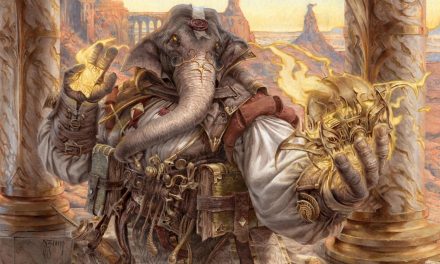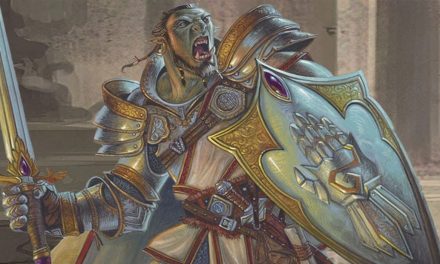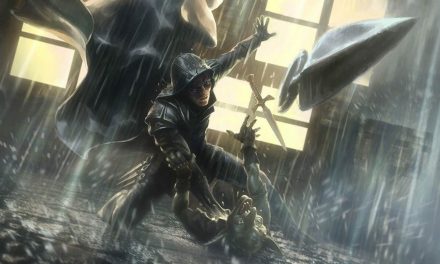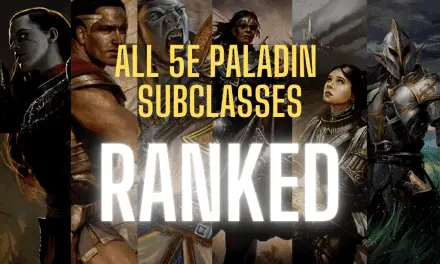Every class in D&D has an ability that just defines it and, for the Druid, that ability is Wild Shape.
But Wild Shape is an ability with so much impact on the class and so many options that it can be kind of confusing. This is especially true for new D&D players!
But fear not, dear reader!
Today we’re rolling up our sleeves and getting in touch with our inner animal as we dive into The Guide to Wild Shape for Druids in D&D 5e!
Overview of Wild Shape in D&D 5e
The Druid gets their signature Wild Shape feature at 2nd level.
Because there are so many beasts to choose from, it is highly recommended that you pick up a copy of the Monster Manual when playing a Druid. You will find the stat blocks for most beasts in the game starting on page 317.
If you want to transform into something that is not explicitly in the Monster Manual, there is enough material there that you can stitch together something real quick. For example, if you want to Wild Shape into a ferret, you might use the Weasel stats on page 340.
With Wild Shape, the Druid can turn into a beast that they have seen before. They can use this ability twice before needing to take a short or long rest to regain it.
When using Wild Shape, the Druid can stay in this form for a number of hours equal to half of their Druid level (rounded down.)
So, for example, a level 9 Druid could turn into a Dire Wolf for 4 hours. If they wish to stay in this form longer, they can expend another use of their Wild Shape ability.
If the Druid is knocked unconscious, drops to 0 hit points, or dies, they return to their normal form. If the Druid wants to revert back to their normal form earlier, they can do so as a bonus action.
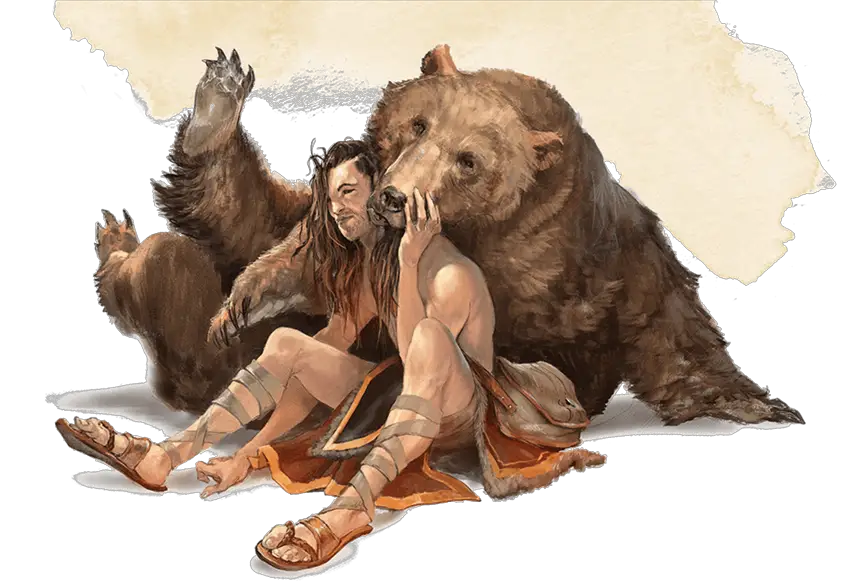
Benefits of Wild Shape in D&D 5e
There are several benefits to using your Druid’s Wild Shape ability.
In fact, the only Druid subclasses that aren’t as likely to use this ability often are the Circle of Stars and Circle of Spores Druids! But even then, they’re bound to pick Wild Shape over their special subclass abilities from time to time.
So let’s go ahead and cover the specific benefits provided by Wild Shape!
Utility
The first (and perhaps biggest) benefit of Wild Shape is the utility that it provides.
Need to track down a fleeing enemy? Turn into a wolf and sniff them out!
Trapped in a room that’s filling with water? Turn into a shark!
Do you see a small opening as you try to infiltrate the enemy’s base? A rat or spider could get in easily!
The Druid is the most adaptive class in D&D 5e and this is largely due to the Wild Shape ability. For just about any situation that you could find yourself in, there is an animal form that can help you!
You Retain Mental Abilities While Using Wild Shape
When you use your Wild Shape ability, you keep your Druid’s Intelligence, Wisdom, and Charisma scores. Additionally, you still keep your skill and saving throw proficiencies while also gaining any that the creature you choose has.
If the creature that you choose has the same proficiency as you but has a higher bonus in its stat block, you can use the creature’s bonus.
So go ahead and pick something strong or fast as the moment requires! You’ll still be plenty clever!
More Hit Points!
When you use your Wild Shape ability to transform into a beast, you gain that creature’s hit points and Hit Dice.
These hit points are separate from your Druid’s hit points. When you return to your normal form, you will have the same amount of hit points that you had when you used Wild Shape.
The only exception to this is that any damage that carries over from reducing your animal form to 0 hit points is then taken by your Druid.
For example, if you are a Tiger with 1 hit point left and a Manticore hits you for 6 damage, the remaining 5 damage would then be taken by the Druid as they revert back to their normal form.
Particularly at lower levels when characters are more likely to die, this is incredibly useful. Using your Wild Shape ability to turn into a Brown Bear, for example, effectively gives you an extra 34 hit points to tank with in addition to the bear’s other abilities.
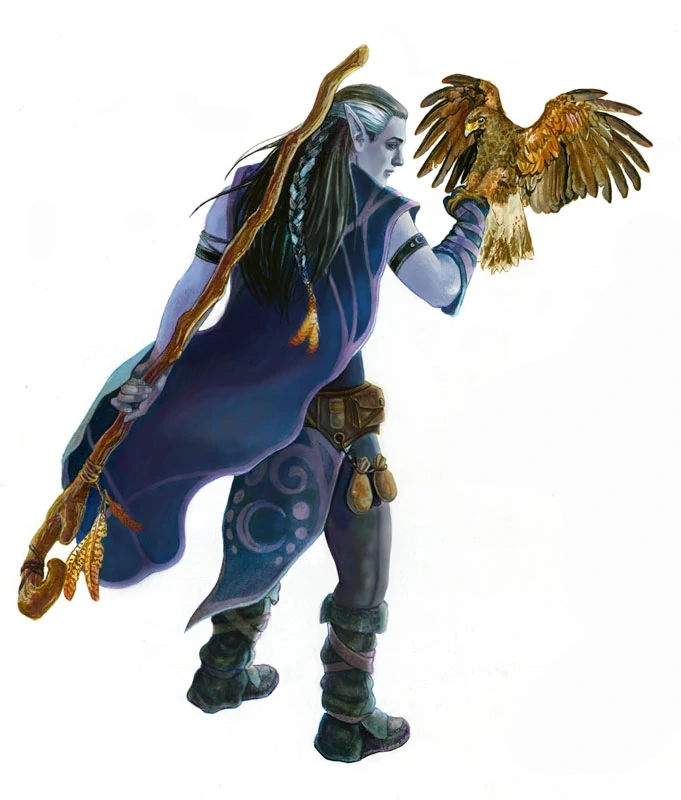
You Retain Class and Racial Benefits
Any class and racial benefits that you gain can be used while you are using your Wild Shape ability. The only catch to this is that you cannot use special senses unless your new form has that sense.
Darkvision is a prime example of this. If your Elf Druid turns into a Brown Bear, they will not have darkvision but will gain the bear’s bonus to perception when smelling.
Examples of Class Benefits
I mentioned this briefly when discussing the Druid Circle of Dreams. These Druids get a healing ability as a part of their subclass. Because these can still be used while in Wild Shape, the Circle of Dreams can still provide healing while they are in beast form.
This also means that a Druid who is multiclassed with Rogue levels would also gain Sneak Attack benefits!
Another common multiclass is mixing Druid and Barbarian levels. What’s the only thing better than having a bear on your side? A bear that can Rage of course!
Examples of Racial Benefits
Just like with class benefits, the Druid can still use racial abilities while in Wild Shape.
A Half-Orc Druid can still benefit from their Savage Attacks and Relentless Endurance abilities. Meanwhile, a Halfling Druid still gets their Brave, Lucky, and Halfling Nimbleness abilities.
As a little bit of a hot take, a Dragonborn Druid would still get use of their breath weapon while in beast form.
That last one is the source of much debate at many tables.
Many Dungeon Masters do not like the idea of a cute little squirrel bouncing up to an enemy and proceeding to breathe fire, acid, or whatever else at them. Personally, I find it hilarious while also opening up for some very creative scenarios.
The principal rules designer for D&D, Jeremy Crawford, was asked about this exact situation on Twitter.
As you can see over at SageAdvice, Crawford says that as long as the creature can exhale, it can use the breath weapon. Apparently, this also extends to butterflies, which I originally did not know breathe through pores in their carapace.
That said, make sure that all of this is ok with your Dungeon Master for your table!
Don’t Worry About Your Equipment
It is up to you whether your equipment falls to the ground when you Wild Shape or is just simply absorbed into the form.
You may even wish to have your new form wearing the equipment if it is at all possible. The equipment does not change size, so it must be possible for the new form to wear it. Otherwise, it is either absorbed or dropped.
Selling the idea that your Killer Whale form is still wearing your Druid’s Hide Armor is a bit of a tough argument, but you do you.
You Might Like: Ranking Every Druid Subclass in D&D 5e!
You Maintain Concentration on Spells
While you aren’t able to cast spells while in Wild Form (which we’ll cover shortly), you can maintain concentration.
If your Druid cast a spell like Entangle before turning into a beast, the spell effect will continue. Depending on the form that you take, this may actually make it even easier to maintain concentration if you get hit.
For spells that allow you to use actions while they are still going, you can still do so. Moonbeam, for example, allows you to use an action to move it 60 feet in any direction. You are still able to do this if you don’t want to use your action for something else.
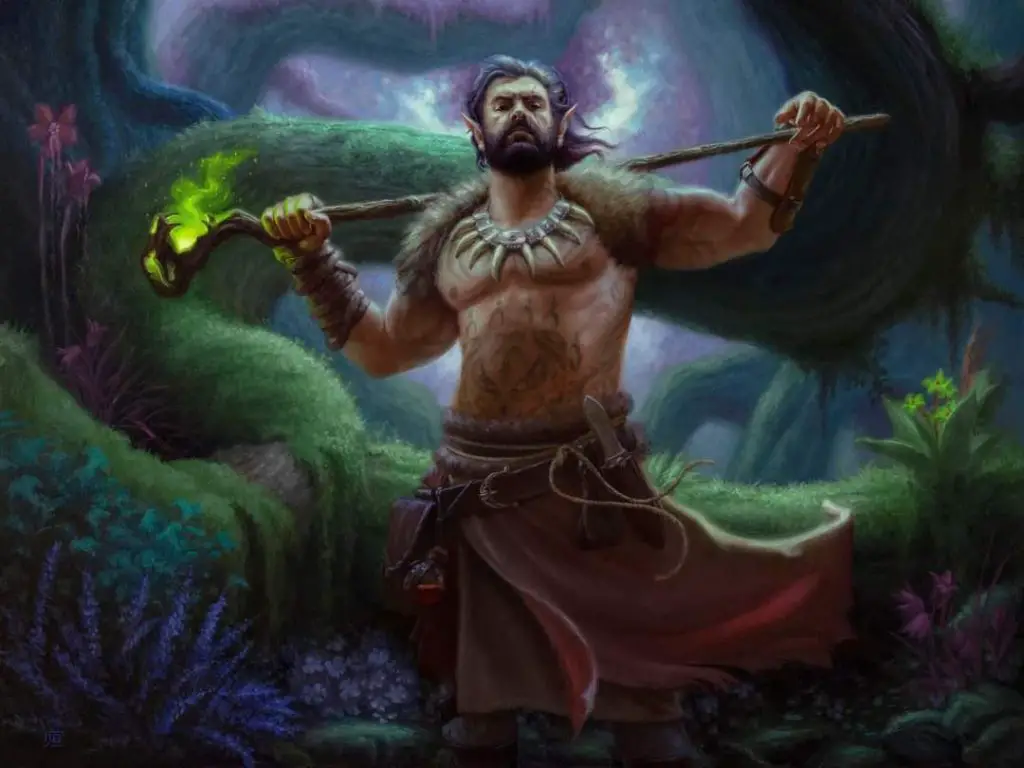
Limitations of Wild Shape in D&D 5e
Unfortunately, there are some limitations to using Wild Shape that you need to keep in mind.
Interactions in Wild Shape
First things first, in a beast form you can’t cast spells and are limited to the physical abilities of the form. For example, you aren’t able to speak or interact with objects that your chosen form wouldn’t be able to.
If you are in Wolf form, you would need to growl or whine to signal your party that danger is coming. Similarly, you would need to have someone do things like open a door for you or flip through the pages of a book.
Beast Shape Limitations by Level
The other limitation to your Wild Shape ability is based on your Druid level.
Your Druid level determines the maximum Challenge Rating (CR) of a beast that you can turn into. Additionally, you aren’t able to turn into beasts with flying or swim speeds until you reach the required level.
At level 2, the Druid can turn into beasts with a maximum CR of 1/4. These creatures cannot have flying or swim speeds.
At level 4, you get your first improvement to your Wild Shape ability. You can now turn into beasts with a maximum CR of 1/2. Additionally, you can now turn into creatures with a swim speed.
Your last Wild Shape improvement comes at level 8. You can now turn into beasts with a maximum CR of 1 and have no restrictions against flying or swimming speeds!
These rules are slightly different for the Moon Druid subclass since it puts a heavy focus on the Wild Shape ability. But the subclass-specific rules for those Druids’ Wild Shape is covered in our Circle of the Moon Druid Guide.
Beasts by Habitat
Because your Druid can only turn into beasts that they have seen, it is well worth it to spend some time in nature when you arrive in a new location.
A Druid from the forest can discover an entire new world of possibilities when the party finds themselves somewhere new. Deserts, mountains, coasts, and more contain a wide spectrum of life that the Druid can meet and observe.
It’s very likely that your Dungeon Master will be excited that you want to spend some time exploring the environment. If you check out page 24 of Xanathar’s Guide to Everything, there are tables for various environments and the creatures that live there. This will be an indispensable resource on your Druid’s travels!
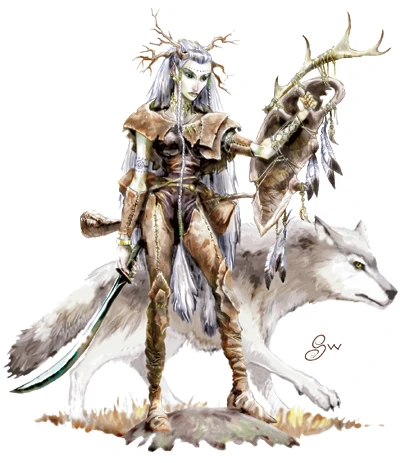
The Best Beast Forms for Wild Shape in D&D 5e
While this article would go on way too long if I did an exhaustive review of every Wild Shape option, let’s cover a few standouts and personal favorites.
Standout CR 1/4 Beast Forms
The Wolf is a solid choice at these early levels. Its Keen Hearing and Smell ability mean that it can be great for tracking enemies. Pack Tactics gives you advantage on attack rolls if you have an ally next to the target. Being able to potentially knock an enemy prone is a very nice plus!
The Giant Wolf Spider has great mobility and stealth. If you don’t think the enemy has a good Constitution modifier, this form’s poison damage can be devastating. However it’s only a DC 11, which makes it a bit of a risk.
Standout CR 1/2 Beast Forms
The Ape is a fantastic choice at this CR. Their hands mean that they can still interact with objects and they also get two attacks per turn. If necessary, they also have a ranged attack where they throw a Rock.
Once you can use forms with swimming speeds, the Reef Shark is a top choice for aquatic animals. With Pack Tactics and a swimming speed of 40 feet, it’s hard to go wrong with the Reef Shark at this level.
Standout CR 1 Beast Forms
For the same reasons that the Wolf is a great choice at CR 1/4, the Dire Wolf is a solid bet at CR 1. It’s a bigger, better version with more hit points, speed, and damage output.
Once you get the ability to use forms with flying speeds, the Giant Vulture is a prime choice. It’s not quite as fast or hardy as a Giant Eagle, but Pack Tactics is just such a wonderful thing.
An upgraded version of the Giant Wolf Spider, the Giant Spider is hardier and deals more damage. It still suffers from a low DC of 11 to resist the poison from its bite, but it does gain a web attack. Being able to restrain an enemy greatly turns the combat’s tides in the party’s favor.
Standout CR 2 Beast Forms
The Giant Constrictor Snake is my favorite option for CR 2 forms. While it won’t be particularly effective at handling groups of enemies, its ability to restrain single targets means that you can quickly eliminate priority targets.
If you happen to see a Saber-Toothed Tiger in your travels, it’s another great CR 2 option for your Wild Shape ability. You’ll want to use hit-and-run tactics to get the most value out of the Saber-Toothed Tiger’s Pounce ability.
Standout CR 3 Beast Forms
The Giant Scorpion is an absolutely vicious option.
Not only does it have a respectable AC, but it gets three attacks! The first two attacks are with its claws. After each of these hits, there is a chance to grapple the enemy.
Next, it goes in for the sting. The sting itself does solid damage, but the enemy has to make a Constitution Saving Throw or take 4d10 poison damage. If they make this save, they still take half.
This makes for an average of 41 damage in a round if the target fails their save against the poison. If they make their save, it’s still 30 points of damage.
Not to cheapen the experience, the Giant Scorpion also has blindsight. This means that being invisible or obscured will not help your enemies.
Recommended: The Full Druid Class Guide for D&D 5e!
Elementals and Wild Shape
Unique to the Moon Druid subclass, Elementals are incredibly powerful Wild Form options.
The Moon Druid can turn into a Fire, Air, Water, or Earth Elemental.
The Fire Elemental is far and away the absolute best for damage, but may not always be ideal. Its greatest strength is the ability to ignite everything that it touches.
Everything.
If you’re using a strategy that isn’t “burn it all down,” that will quickly change if you take the Fire Elemental form. Not that that’s a bad thing, but it’s good to be aware!
Personally, I’m a fan of the Water Elemental.
The Water Elemental is able to grapple enemies and restrain them inside of its own current. While restrained, the enemy creatures take constant damage and begin to drown. Being able to completely remove two enemies from combat this way is just fantastic.
Though I also have to give a special shoutout to the Earth Elemental. It can definitely put out some respectable damage, but it’s especially useful if your party needs something that can take a ton of damage between them and the enemy.
Plus, being able to use Earth Glide to pass through unworked earth and stone brings some very handy mobility to your kit!
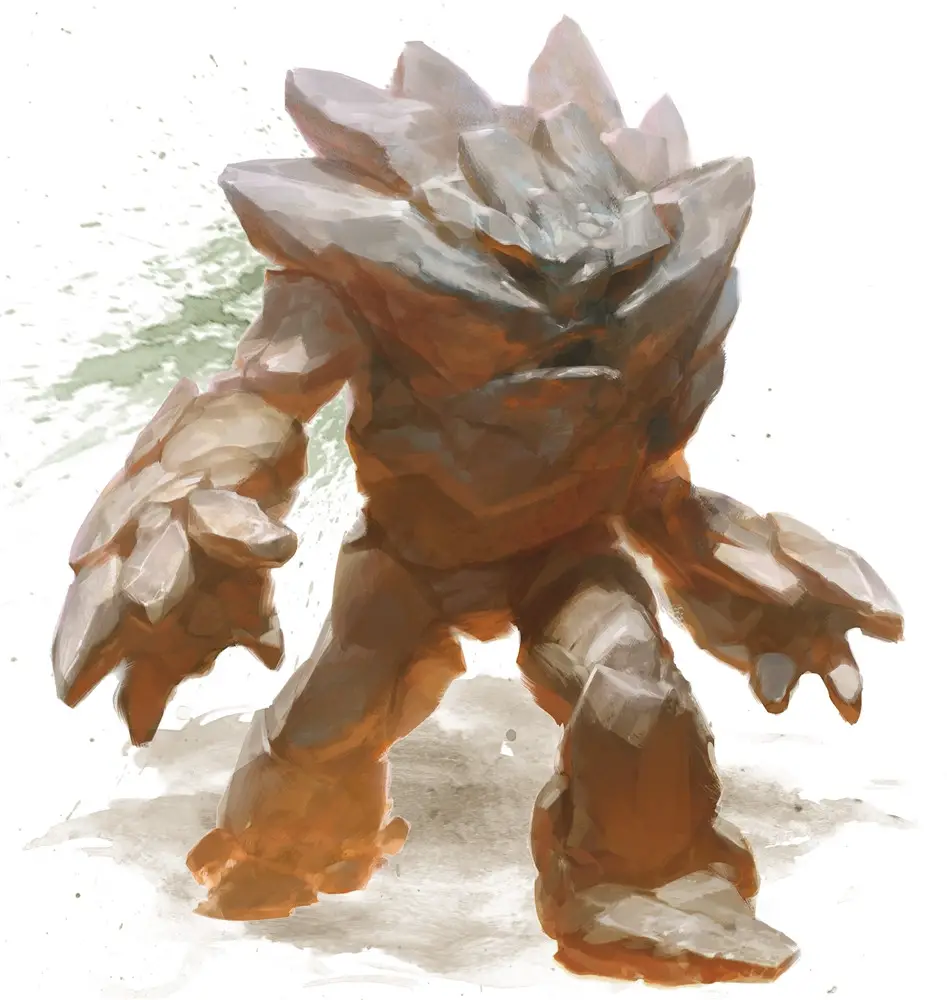
Wild Shape vs Polymorph vs Shapechange
It’s worth taking a moment to look at the differences between Wild Shape and spells like Polymorph and Shapechange. We’ve already talked a lot about Wild Shape in D&D 5e, so let’s look at the other two.
Polymorph gives a larger amount of options for what a creature can be turned into. However, the target does not retain their mental abilities as they would with Wild Shape or Shapechange.
Polymorph can be used to turn an enemy into something harmless or to turn an ally into something powerful. Just be warned that, for better or worse, the target will be acting based on the chosen creature’s instincts.
In other words, if you Polymorph someone into a Giant Ape you better be ready for them to act exactly as a Giant Ape would!
Shapechange functions as the supreme Granddaddy version of Wild Shape. The creature that you choose to turn into must have a CR equal to your level or less. As a Druid gets access to 9th-level spells at level 17, there are some very powerful options to choose from.
If you have ever wanted to play as a Beholder, Purple Worm, Adult Dragon, or any other powerful creature of legend, this is your chance!
Because you retain your mental stats when using Shapechange, you stay in full control of your behavior. Just note that you cannot use legendary actions or lair actions in this new form.
The spell lasts for one hour, and you can use your action to change your form into something else if you would like. Just choose carefully as your hit points do not increase if you change into a form that has more.
Conclusion – Wildshape in 5e
Wild Shape is an incredibly important and defining ability of the Druid. It allows the Druid player to approach situations with a ton of creativity while also helping them fill in any gaps that the party may have.
As you level up, Wild Shape will usually become almost exclusively used for utility purposes like flying or water breathing unless you are a Circle of the Moon Druid. But it’s some truly incredible utility!
Do you have any questions about Wild Shape in D&D 5e?
What are some of your favorite beast forms to take in 5e?
Let’s chat in the comments!



